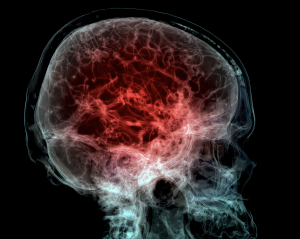Microplastics, plastic particles fewer than 5 millimeters in size, have infiltrated the environment at an alarming rate as worldwide plastic use increases.
微塑料是指尺寸小于5毫米的塑料颗粒,随着全球塑料使用量的增加,它们以惊人的速度渗透到环境中。
Levels of microplastics found in the environment have surged in the past few decades, with current plastic production at more than 300 million tons annually, and an estimated 2.5 million tons floating in the world's oceans as of 2023, over ten times their 2005 levels.
过去几十年,环境中的微塑料含量急剧上升,截至2023年,全球每年生产的塑料超过3亿吨,其中约250万吨漂浮在世界海洋中,是2005年水平的十倍以上。
A new study in Nature Medicine finds that microplastics and nanoplastics -- which are even smaller at 1 to 1000 nanometers in size -- accumulate at higher levels in the human brain than in the liver and kidneys.
一项发表在《自然医学》上的新研究发现,微塑料和更小的纳米塑料(尺寸为1到1000纳米)在人脑中的积累水平高于肝脏和肾脏。
The study also finds significantly higher concentrations of microplastics and nanoplastics in 2024 samples compared to 2016 samples, and higher levels in brains from people diagnosed with dementia.
研究还发现,与2016年的样本相比,2024年的样本中微塑料和纳米塑料的浓度显著增加,并且在被诊断为痴呆症的患者大脑中含量更高。
Although the study does not establish a cause-and-effect relationship between these plastic particles and dementia, it raises questions about the possible health consequences of exposure to plastics.
尽管这项研究并未确立这些塑料颗粒与痴呆症之间的因果关系,但它引发了人们对塑料暴露可能带来的健康影响的担忧。
While scientists know these plastics are in our bodies, how they impact our health is unclear.
科学家们虽然知道这些塑料存在于人体内,但它们对健康的具体影响尚不明确。
"We think this is simply mirroring the environmental buildup and exposure," says study author Matthew Campen, professor of pharmaceutical sciences at the University of New Mexico. "People are being exposed to ever-increasing levels of micro and nanoplastics."
该研究的作者之一、新墨西哥大学药学教授马修·坎彭表示:“我们认为这仅仅是环境积累的反映。人们正暴露在日益增加的微塑料和纳米塑料中。”

Microplastics and nanoplastics (MNP) can be invisible to the naked eye and come from larger plastic products -- like soda bottles, shopping bags, and Styrofoam containers -- breaking down in the environment.
微塑料和纳米塑料(MNPs)可能肉眼不可见,它们来源于更大的塑料制品(如汽水瓶、购物袋和泡沫塑料容器)在环境中的分解。
Scientists have studied MNPs in the oceans since the 1970s.
自20世纪70年代以来,科学家们就开始研究海洋中的纳米塑料。
Marine animals have been found to have microplastics in their bodies, absorbed from the water and from eating contaminated fish.
研究发现,海洋动物体内含有微塑料,这些塑料来自水体以及食用受污染的鱼类。
Microplastics also accumulate in the tissues of other animals that people eat like pigs, cows, and chickens.
微塑料还积累在人们食用的其他动物(如猪、牛和鸡)的组织中。
MNPs can end up in the air too: indoor air especially tends to contain more MNPs than outdoor air, due to shedding of particles from plastics in clothing, furniture, and household products.
纳米塑料也可能进入空气中,尤其是室内空气,由于衣物、家具和家用产品中塑料颗粒的脱落,其MNPs含量往往高于室外空气。
After we inhale these particles, they can travel through the body and end up in various organs.
我们吸入这些颗粒后,它们会通过身体进入各个器官。
Studies have found MNPs in human lungs, placentas, blood vessels, and bone marrow.
研究已在人类的肺、胎盘、血管和骨髓中发现了纳米塑料。
A 2024 study found evidence that MNPs can pass through the blood-brain barrier, a selective filter that controls what can enter the brain from the bloodstream.
2024年的一项研究发现,纳米塑料能够穿过血脑屏障,这是一种选择性过滤器,控制着哪些物质可以从血液进入大脑。
While it was previously thought only the smallest nanoplastics could pass the barrier, this study found larger microplastics can enter the brain too.
此前,人们认为只有最小的纳米塑料才能穿过这一屏障,但这项研究发现,较大的微塑料也能进入大脑。













